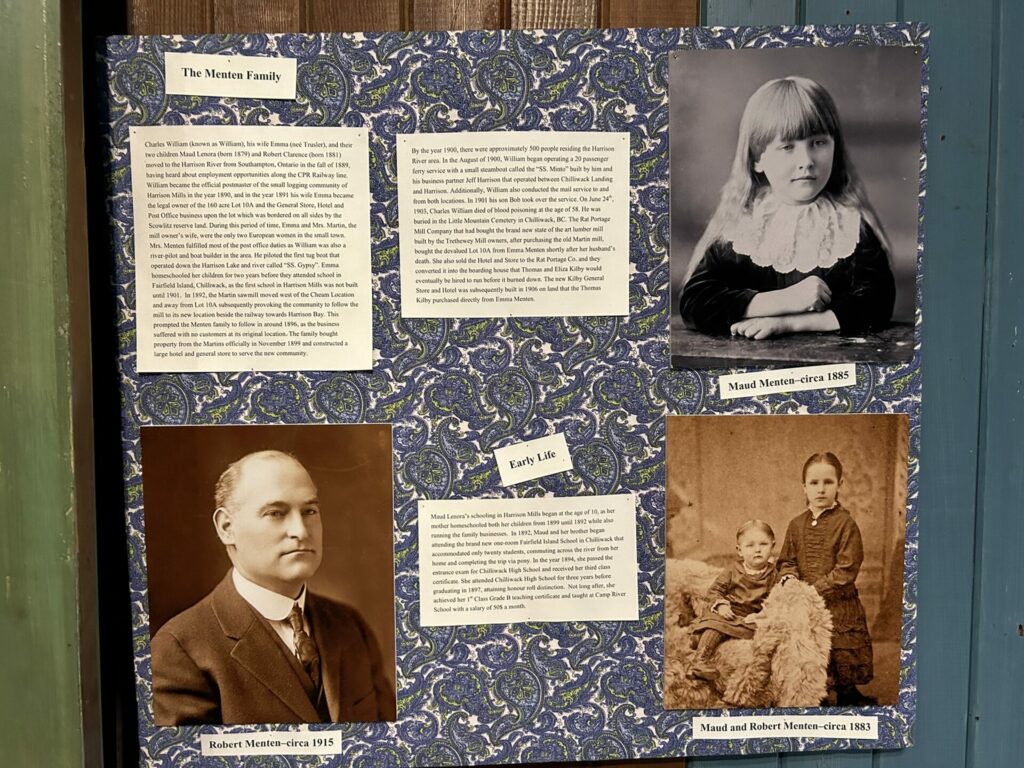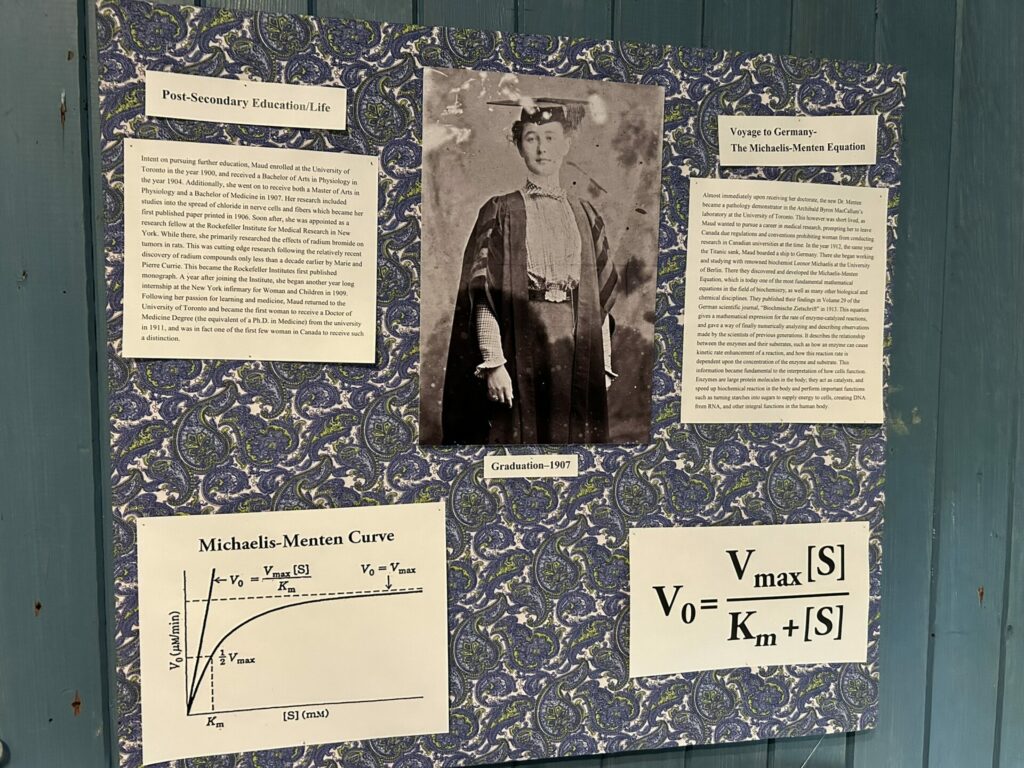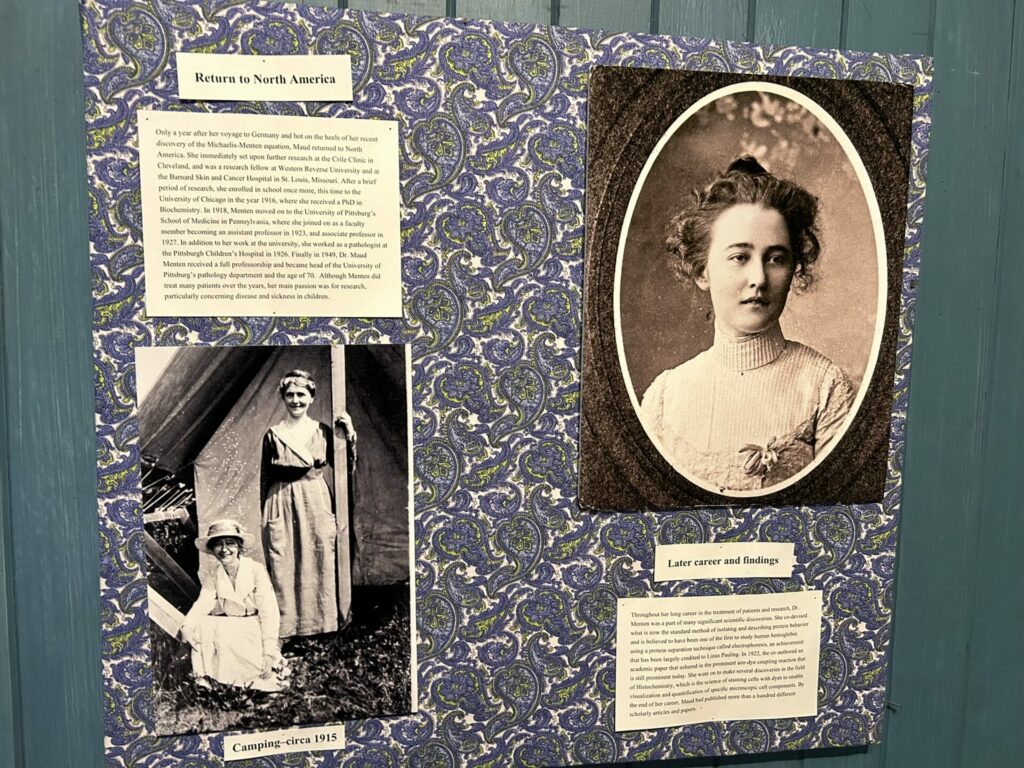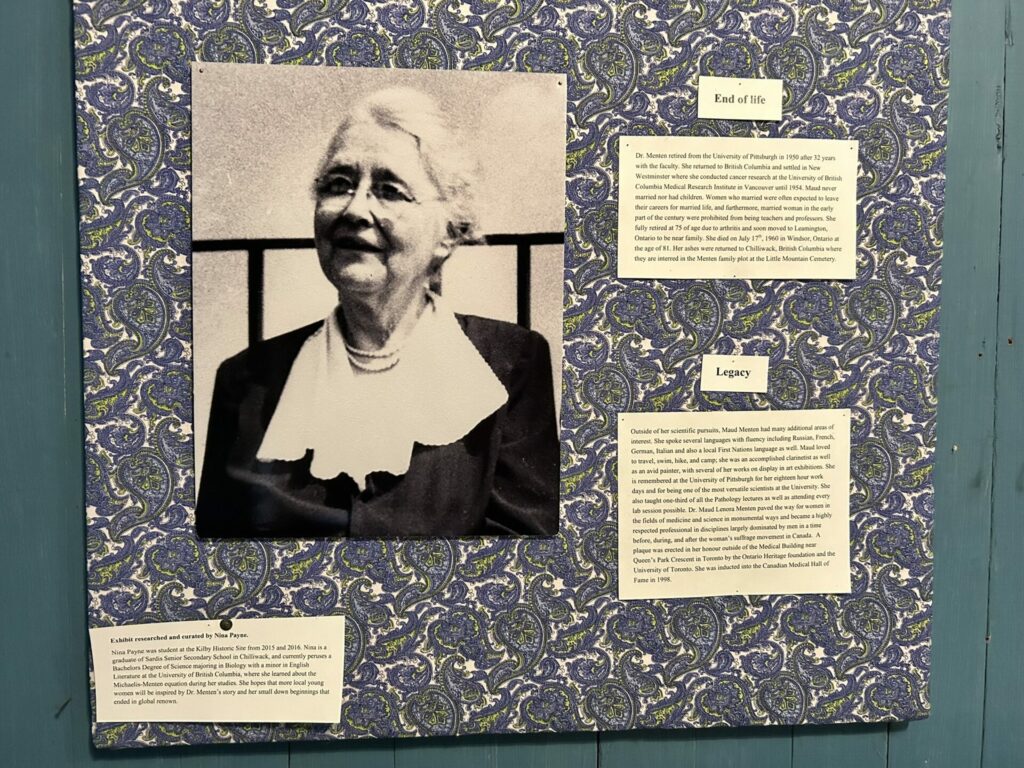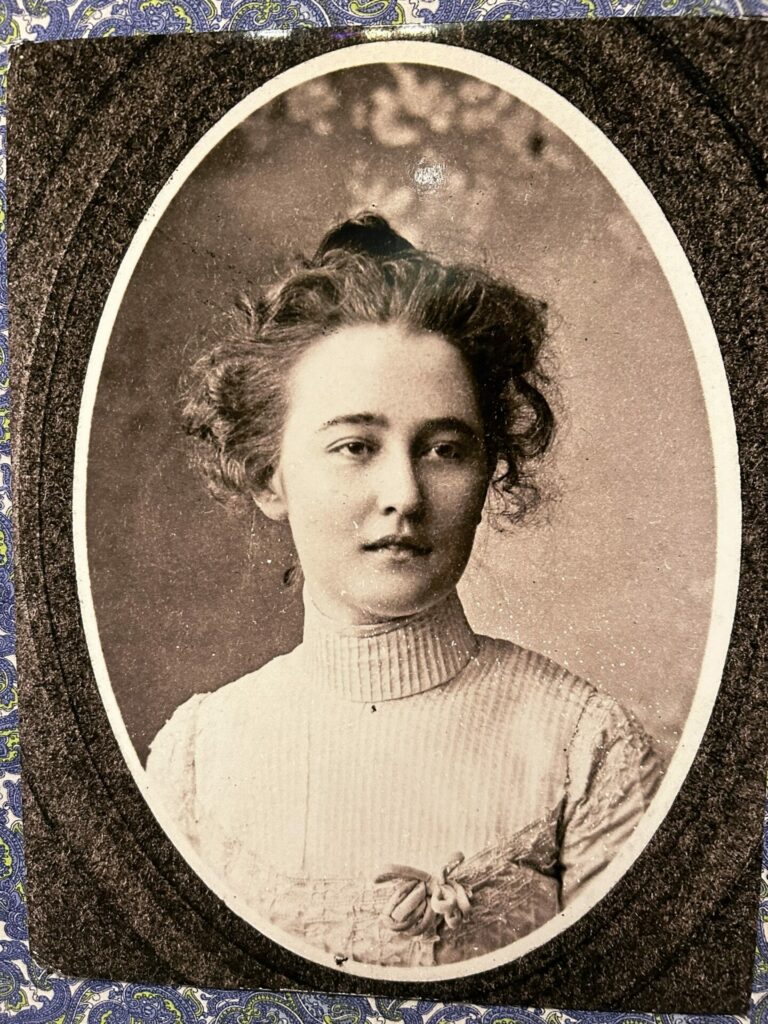During a tour of the Kilby Historic Site in Harrison Mills, I noticed a series of posters depicting the life of a local woman, Maud Menten, and her family. Maud lived an incredible life, dedicated to science.
Maud was born on March 20, 1879, in Port Lambton, Ont., to Charles (known as William) and Emma Menten. Maud also had a younger brother, Robert.
In the fall of 1889, the Menten family moved to the Harrison River region to pursue employment in the area – William became the postmaster in Harrison Mills in 1890 and in 1891, Emma became the legal owner of 160 acres, housing a general store, hotel and post office. William also worked as a river pilot and boat builder. In 1896, the family moved toward Harrison Bay and constructed a large hotel and general store to serve this new community. William died in 1903 and the land, hotel and store were sold to the Rat Portage Co. and eventually came under the ownership of Thomas Kilby. (See https://www.bcmag.ca/exploring-the-kilby-historic-site/ for more!)
Maud and her brother began attending school in 1892 at the brand-new, one-room Fairfield Island School in Chilliwack. Prior to this, Maud and Robert were homeschooled by their mother. To get to school, Maud and Robert commuted across the river from their home and finished the trip to the schoolhouse on horseback. In 1894, Maud passed the entrance exam for Chilliwack High School and she graduated from high school, with honour roll distinction, in 1897. After graduating high school, Maud earned her 1st Class Grade B teaching certificate and she taught at the Camp River School, earning $50 a month.
But Maud wanted more. She decided to pursue further education, enrolling in the University of Toronto in 1900 and she earned her Bachelor of Arts in Physiology in 1904. She then earned a Master of Arts in Physiology and a Bachelor of Medicine in 1907.
According to the research compiled at the Kilby Historic Site, Maud’s “research included studies into the spread of chloride in nerve cells and fibers, which became her first published paper, printed in 1906. Soon after, she was appointed as a research fellow at the Rockefeller Institute for Medical Research in New York. While there, she primarily researched the effects of radium bromide on tumors in rats. This was cutting-edge research following the relatively recent discovery of radium compounds less than a decade earlier by Marie and Pierre Currie. This became the Rockefeller Institute’s first published monograph. A year after joining the Institute, she began another year-long internship at the New York Infirmary for Women and Children in 1909. Following her passion for learning and medicine, Maud returned to the University of Toronto and became the first woman to receive a Doctor of Medicine degree (the equivalent of a Ph.D. in Medicine) from the university in 1911 and was in fact one of the first few women in Canada to receive such a distinction.”
After receiving her doctorate, the newly named Dr. Menten became a pathology demonstrator with the university. However, Maud wanted to continue her career in medical research and regulations in Canada during that time prevented women from conducting research at Canadian universities. So, in 1912, Maud boarded a ship to Germany where she began working and studying with biochemist Leonor Michaelis at the University of Berlin.
According to the research at the Kilby Historic Site, Leonor and Maud together discovered and developed the Michaelis-Menten Equation, “which is one of the most fundamental mathematical equations in the field of biochemistry, as well as many other biological and chemical disciplines.”
Maud returned to North America after spending only a year in Germany and she continued her research career at the Crile Clinic in Cleveland, was a research fellow at Western Reverse University and at the Barnard Skin and Cancer Hospital in St. Louis, Missouri. She went back to school in 1916, enrolling at the University of Chicago, and earned her Ph.D. in biochemistry.
In 1918, Maud moved on to the University of Pittsburgh’s School of Medicine in Pennsylvania, becoming a faculty member, an assistant professor in 1923 and an associate professor in 1927. Along with her work at the university, Maud worked as a pathologist at the Pittsburgh Children’s Hospital. In 1949, Maud received a full professorship and became the head of the University of Pittsburgh’s pathology department. While she did treat patients during her career, Dr. Maud Menten’s passion was focused on research, especially when it came to disease and sickness in children. By the end of her career, Maud had published over 100 different scholarly papers and articles and she was part of many scientific discoveries. In 1952, after her retirement from the University of Pittsburgh, Maud joined the British Columbia Medical Research Institute, where she contributed to cancer research in Canada. Maud passed away on July 17, 1960. On Oct. 28, 1998, Maud was posthumously inducted into the Canadian Medical Hall of Fame.
For more information on Dr. Maud Menten, you can visit https://www.cdnmedhall.ca/laureates/maudmenten and https://definingmomentscanada.ca/insulin100/stem-women/maud-menten/.
